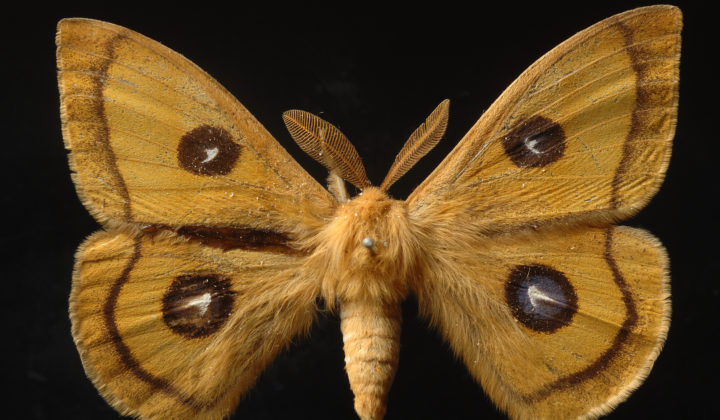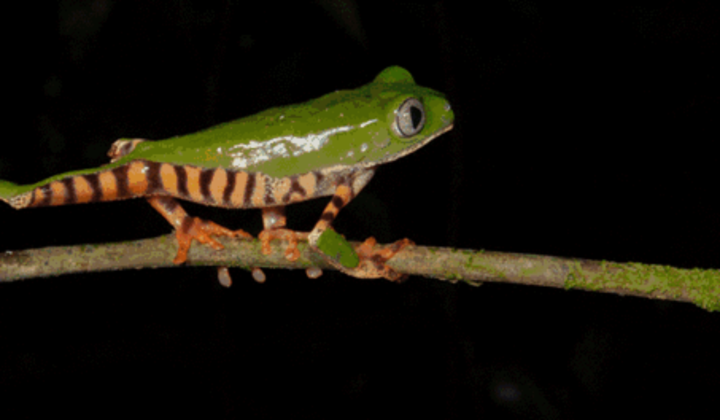Lepidoptera Research
Systematics and phylogeny of snout moths (pyraliodea)
Since the introduction of the binary nomenclature in zoology in 1758 by Carl Linnaeus, about 15,500 species of Pyraloidea have been described. Still up to the middle of the 20th Century, the actual biodiversity has been largely underestimated. As a result, many original descriptions do not allow for verification of species and contribute to the multiple description of species so that there are over 7,000 synonymous names today. Furthermore, the traditional classification relies more on similarities than on relationship, classifying of Pyraloidea in over 2,000 genera (+ 1,350 synonyms). As a result, the classification of the group is a very confusing system.
The workup of these deficits, the cataloging of all names previously described, the revision of already described taxa, the scientific description of new species and the reconstruction of their natural relationships form the core of our research activities.
All names previously described are catalogued via the Global Information System on Snout Moths (GLOBIZ), which was established as part of the GBIF-D initiative in 2003. GLOBIZ is an online database that allows simultaneous data processing by specialists from around the world and makes the data freely available on the internet. The database already contains 14,000 pyraloid species (5,600 + synonyms) and is coordinated at the Museum of Zoology Dresden.
CURRENT RESEARCH PROJECTS
PHYLOGENY OF PHYCITINAE
PhD project by Diplom-Biologist Franziska Bauer
For my Ph.D. dissertation, I aim to conduct phylogenetic research on a megadiverse group of moths, the Phycitinae. This cosmopolitan group of Lepidoptera contains around 3,450 species. Despite their overwhelming diversity, which is considerably high in temperate regions, and their high economic importance arising from many ubiquitous pest species, surprisingly little effort has been made to provide a stable, phylogeny-based nomenclature and to shed light on thereasons for the strong diversification and the geographic origins anddiversification routes. The research in my Ph.D. project will employ modern phylogenetic techniques to investigate various aspects of the evolution and classification of this megadiverse group of moths. Understanding the evolutionary affinities of pest species, to which for example the Indian Meal moth Plodia interpunctella belongs, will be an important step for future studies towards a better understanding of the origin of the current distributional and behavioral patterns shown by moths responsible for enormous financial losses in all parts of the world.
COMPARATIVE AND FUNCTIONAL ANATOMY OF LEPIDOPTERA
Dr Francesca Vegliante
Some questions on the evolution and mechanics of the insect body require a study of its internal organs (anatomy). The knowledge of internal structures is also the basis for further research on the chemical processes which occur in the insect body, and which are the research topic for physiologists. The Lepidopterists’ team at the Museum für Tierkunde Dresden investigates the anatomy of butterflies, moths, and their larvae and pupae by means of dissections and histological sections. In our histology laboratory, the insects are cut into very thin slices (histological sections), which are then attached to glass slides, and, after being stained, can be used for the study of anatomical details under the compound microscope. Staining is required because most internal organs of insects are colourless and transparent. Based on the sections, perspective drawings showing the insect’s inside can be made,or three-dimensional computer-models can be obtained. Current anatomical research on the Lepidoptera at the Museum für Tierkunde Dresden includes:
- Diversity and evolution of exocrine glands in caterpillars (in collaboration with I. Hasenfuss)
- Copulatory mechanism of Anania hortulata (Pyraloidea: Crambidae) (in collaboration with M. Nuss)
- Larval head anatomy of Micropterix calthella





